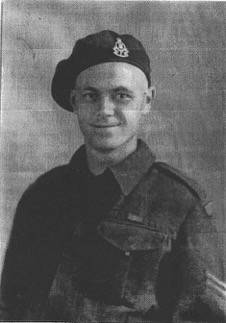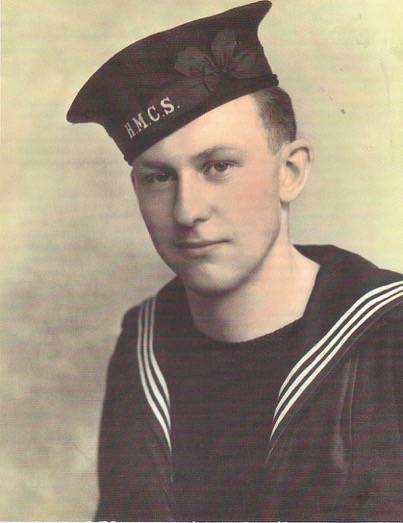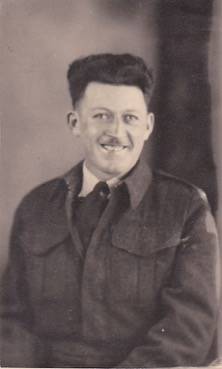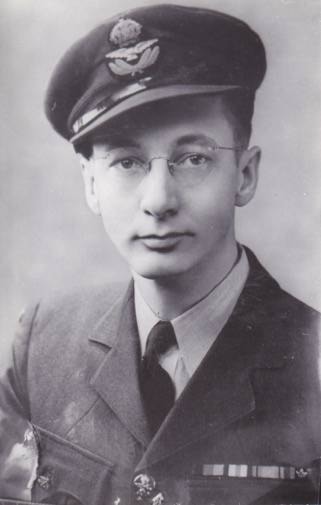By Dr Karen Aberle
I have the privilege of being the Chief Curator at the Heritage Museum as well as the Education and Publicity Executive member with the Royal Canadian Legion, Branch 86. There are many instances when my professional and volunteer life overlap, but they are seldom as important as this week. On Thursday we will commemorate the 75th anniversary of the D-Day landings at Normandy on June 6, 1944. While we will read and hear many stories of how American, British, and Canadian forces joined for the greatest seaborne invasion in history that would begin the liberation of Western Europe and the defeat of Nazi Germany, I wanted to find a way to connect this day, and the subsequent events, to our community. I was able to find four local veterans in the museum’s record who can put a face to the various aspects of this historic battle.
Seaman Selmar Edgar Raymond (Ray) Braa
Ray was born on November 29, 1921 in Edmonton and moved to Wetaskiwin in 1939 with his father the Reverend N.R.T. Braa and his stepmother Alma. He joined the Wetaskiwin “D” Company Edmonton Fusiliers in 1939, which was part of the Honour Guard for the Royal Visit to Edmonton in June of 1939. An active young man, he played goal for the high school hockey team, and was the drummer for Jean George’s School Band. Ray later enlisted in the Royal Canadian Naval Volunteer Reserve in Edmonton. During his time at sea, he served on three corvettes: the HMC ships Brandon, Woodstock, and Timmons. During D-Day operations, he was a radar operator on a troop transport. His transport was torpedoed. Fortunately they were rescued and spent the rest of the day in London. Following D-Day he completed several Atlantic convoys until the end of the war. Ray married Catherine Wyllie in February 1942 and the couple had five children. He passed away on April 18, 1963.
Corporal Russell Lorne Hougestol
Russell was born on June 25, 1920 near Lake Demay, Alberta and his family moved to a farm west of Millet. He joined the Canadian Army in 1942 and served in the Royal Canadian Mechanical Engineers with the tank corp. He went overseas in 1943 and was stationed in Aldershot, Barton-on-Sea, Brighton, and Southampton. In Southampton the Canadians disembarked boarding ships for the invasion of Normandy on D-Day. Russell’s unit landed on Nan White Beach, and he was stationed in a valley a few miles from the beach in a limestone cave. This cave was where the limestone came from the Statue of Liberty. He returned from the war in 1945 and worked on the family farm until 1947 and then in the oilfield for five years before taking a job with Texaco Oil Co. He married shortly after returning from the war and had five children. In 1961 he married again to Gertrude Guldbrandsen and they had two sons. Russell passed away on October 17, 2005.
Private Henry Bernard Bailer
Henry was born on February 7, 1914 on the farm near Wetaskiwin. He completed his education in the district before working on the family farm. Following enlistment at the No. 13 District Depot in Edmonton, Alberta July 24, 1942, Bailer served with the Royal Canadian Infantry Corps attached to the South Saskatchewan Regiment as a private. While Private Bailer was not part of the initial D-Day attack, he was part of the subsequent advance into France. His regiment arrived in Normandy two days later on July 8, 1944 in support of the 6th Infantry Brigade, 2nd Canadian Infantry Division. They took part in the attack at Verrières Ridge against German SS Panzer troops. Private Bailer died on August 14, 1944 following the accidental bombing attack by Allied aircraft on Canadian and Polish troops advancing towards Falaise near Clair-Tizon. One of 400 killed in the attack, Bailer is commemorated at Bretteville-sur-Laize Canadian War Cemetery, Calvados, France. He was only 30 years old.
Field Officer William (Bill) Henry Odell
Bill was born in Wetaskiwin in 1917 and graduated from Wetaskiwin High School. He enlisted with his older brother Jim in the RCAF in August 1941. Bill was initially trained in radar and became a supply officer with a spitfire squadron that operated a mobile air base. The airfield included 1,700 men tasked with building, dismantling, moving, and rebuilding the airfield as the front advanced across Europe, as well as supply and operate the spitfire squadron. Metal tracks laid on a field served as runways. In June 1944, a week after D-Day, Bill’s squadron landed in Normandy and were initially stationed in Bayeaux as part of a mobile unit that provided supplies and service to aircraft and ground crews. They later made their way through France, up into Belgium and Holland, while ending the war in northern Germany. He returned home to Wetaskiwin in January 1946. His brother Jim was killed in 1943 when his Lancaster bomber was shot down. Prior to enlisting, Bill graduated from the University of Alberta as a pharmacist, and opened his own drugstore in Wetaskiwin in 1946, which he ran until he retired in 1978. Bill passed away in 2001.
Dr Karen Aberle is the Executive Director and Chief Curator of the Wetaskiwin and District Heritage Museum and writes a regular column. She can be reached at wdhm@persona.ca.



